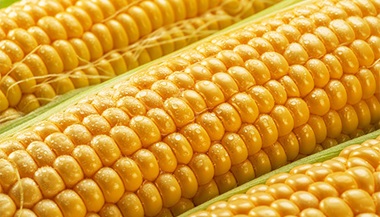Low-Sodium Holiday Hacks from a Dietitian
It’s time to gather for the winter holidays! For people with high blood pressure or chronic kidney disease, the season of festive meals and buffets can seem like one big obstacle course.
If you are following a diet and lifestyle approach to manage hypertension or kidney issues, here are some helpful hints from Ashli Greenwald, an advanced practice dietitian at Johns Hopkins Bayview Medical Center. These insights and tested recipes can help you successfully navigate holiday celebrations and enjoy plenty of flavor and less sodium.
Know sodium amounts
People with high blood pressure and/or kidney disease should generally eat between 1,500–2,300 milligrams (mg) of sodium a day; however, it’s important to follow your doctor or dietitian’s individual recommendations. The upper limit, 2,300 mg, is equal to about 1 teaspoon of salt!
Check food labels for sodium
Confused by wording on food labels? No problem: Here is a translation guide.
- Sodium-free: less than 5 mg sodium per serving
- Very low sodium: less than 35 mg per serving
- Low sodium: less than 140 mg sodium per serving
- Beware of products identified as “unsalted,” “no added salt,” “reduced salt” or “lower sodium” — these items may reduce the sodium content of the food; however, they still may be high in sodium.
Think twice about super salty items
When you’re passing plates or making your selections at the buffet, here are some of the high-sodium foods to look out for:
- Processed meats, including cold cuts, bacon, sausage and hot dogs
- Ham
- Macaroni and cheese (except for lower sodium recipes, like ours, below)
- Salted chips, pretzels and crackers
- Processed cheese and cheese spreads
- Salted nuts
- Pickles and olives
- Some dips, dressings and sauces
“Instead, opt for fresh or frozen fruits and vegetables, fresh meats and unsalted snacks,” Greenwald advises.
More Sodium-Cutting Tips
Here are some of Greenwald’s favorite hacks, with clever swap-outs for delicious holiday food with nutritional benefits.
When you’re cooking for yourself, avoid processed foods,” she says. “Always use fresh, frozen or no-added-salt canned goods. Compare labels in the grocery store and purchase the lower sodium version of the same food.”
- Grains: Choose unsalted crackers, lower sodium breads and unsalted snacks.
- Dairy: Avoid processed cheese, and swap for low-sodium yogurts and cheeses.
- Protein: Pass on the smoked, cured or canned meats, and opt for more fresh, lean varieties.
- Condiments: Choose lower sodium versions of BBQ sauce, soy sauce and other marinades.
Shake up your holiday seasonings
Greenwald advises, “Check with your doctor or dietitian before using salt substitutes, which contain potassium chloride ― an ingredient that may be restricted in certain medical conditions.
“Skip the salt shaker when cooking. Take advantage of fresh herbs and spices. Add flavor with lemon juice, olive oil, basil, curry, dill, garlic, onion powder, oregano, paprika or rosemary. In addition to adding flavor to foods, they offer many health benefits,” she notes.
When attending parties or meals, bring a small shaker of your favorite sodium-free herb or make your own spice blend to season your food so you’re not tempted to reach for the salt shaker.
Spice Blend Recipe
Makes 1/3 cup
- 5 teaspoons onion powder
- 2½ teaspoons garlic powder
- 2½ teaspoons paprika
- 2½ teaspoons dry mustard
- 1½ teaspoons thyme
- ½ teaspoon white pepper
- ¼ teaspoon celery seed
Save room for a small indulgence
If you know you’re going to encounter temptation, plan ahead. If a particular food item is your holiday favorite that you only get once a year, consider allowing yourself a small serving, and fill the rest of your plate with lower sodium items. For example, Greenwald says. “Double the veggies on your plate, and eat less of the Christmas ham.”
Don’t be too hard on yourself
Eating during the holidays can be challenging. There are more tempting foods around, which can derail your dietary goals. “It’s important to focus on your overall diet and lifestyle throughout the whole season,” Greenwald stresses. “Focus on fresh foods that are naturally lower in sodium, drink plenty of water and stay physically active. Don’t let one holiday meal turn into the whole season.”
Find low-sodium recipes you love
There are great resources online to find low-sodium recipes that are perfect for the winter holidays. “This holiday season, try skipping the added salt in your favorite potato latke recipe. Use fresh beans or low-sodium broths and soups to make your Karamu stews,” Greenwald says.
Make something fantastic from these, and bring it to the party to ensure you have something to eat and share. Your friends will appreciate it ― especially those who are also adopting a healthy lifestyle.
Low-Sodium Sweet Treats
- Dark Chocolate Chip Oat Bars: Rich chocolate taste, with only 12 mg of sodium per bar.
- Pumpkin Cranberry Gift Loaves: A festive gift for others or yourself, with 130 mg sodium per mini loaf.
- Frosted Orange Cake: Combining the tastes of orange, vanilla and cocoa, this fabulous cake has 68 mg sodium per serving.
- Fruited Buckwheat Pancakes: Make breakfast magical with only 59 mg of sodium per serving when you add a teaspoon of butter.
Low-Sodium Savory Sides and Snacks
- Beet-All Pasta Salad: Delicious alongside meat or on its own, with 120 mg sodium per serving.
- Updated Macaroni and Cheese: Perfect for potlucks and a favorite among kids, with 120 mg of sodium per serving.
- Garlic Whipped Potatoes: Full of flavor, with only 22 mg sodium per serving.
- Vegetable Dip Mix: Dress up your veggies with only 53 mg of sodium per 2 tablespoons.
More Low-Sodium Recipes
Check out these resources:
- The American Heart Association: Recipes | American Heart Association Recipes
- National Kidney Foundation Nutrition | National Kidney Foundation
- The National Heart, Lung, and Blood Institute DASH Eating Plan | NHLBI, NIH
Healthier Holidays with Hypertension: Beyond Diet
What you eat is important to watch when you’re managing high blood pressure or kidney problems, but other lifestyle habits can help support your health. Avoiding alcohol, watching your caffeine intake, maintaining a healthy weight and staying physically active can also help you keep your blood pressure in a safe range.
Take time for some self-care with friends and family this holiday. Take a walk together in the crisp air, sip some mulled cider or herbal tea, and enjoy the peace and beauty of the holiday season.






